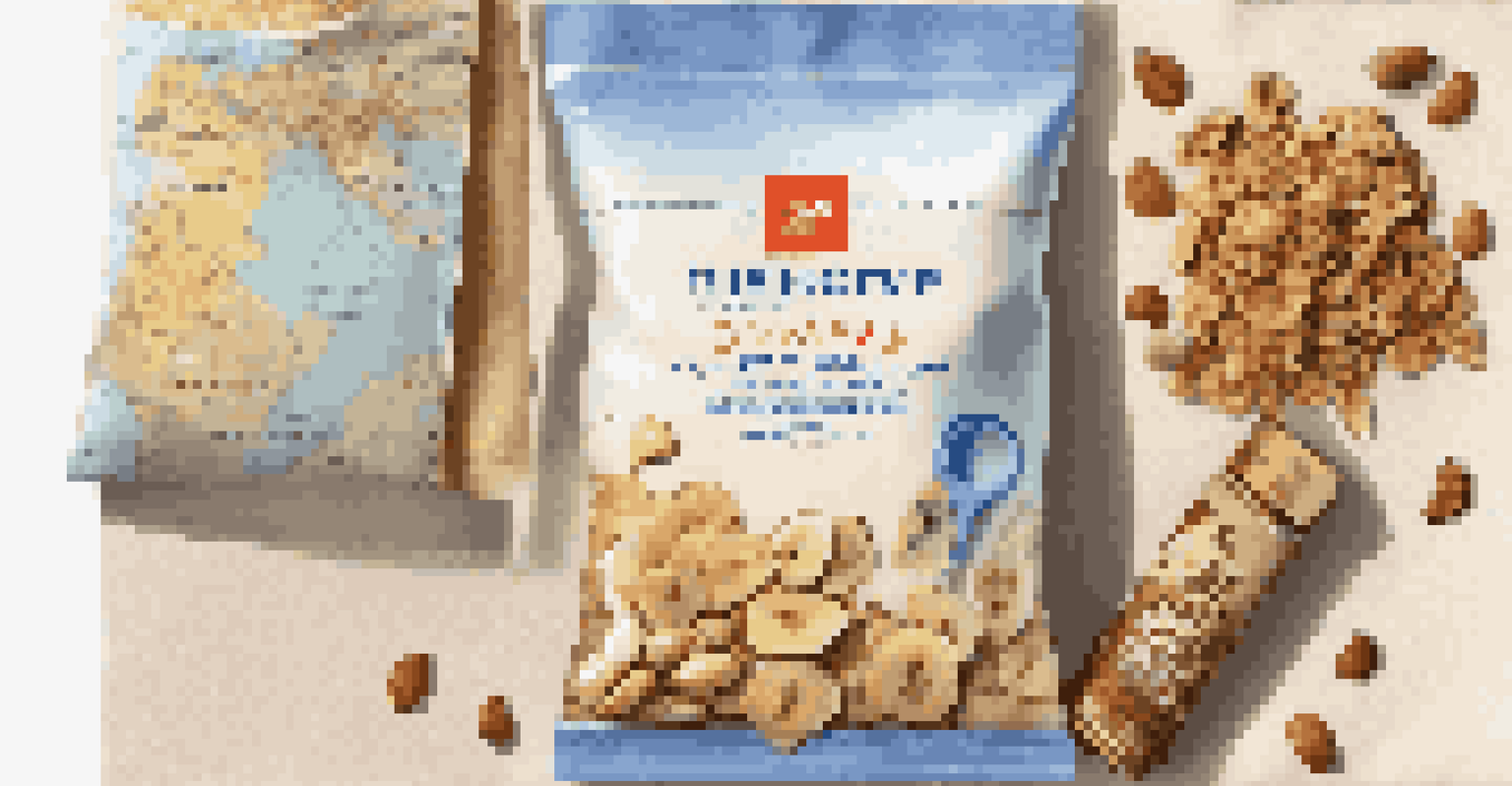Traveling with a Low-FODMAP Diet: Important Tips to Follow

Understanding the Low-FODMAP Diet While Traveling
The Low-FODMAP diet is designed to help manage digestive issues by limiting certain carbohydrates that can cause discomfort. When traveling, it's crucial to understand what foods fit into this diet and how to navigate potential challenges. Familiarizing yourself with Low-FODMAP foods before your trip can ease anxiety about food choices.
Traveling – it leaves you speechless, then turns you into a storyteller.
Many travelers find it beneficial to prepare a list of Low-FODMAP foods and snacks that they can easily pack. Think of items like bananas, rice cakes, and nuts—these are not only portable but also safe options. Understanding local cuisine and identifying which dishes might be Low-FODMAP can help you enjoy local flavors without fear of digestive distress.
Lastly, remember that traveling is about experiencing new things. While it’s important to stick to your dietary needs, maintaining a flexible mindset can enhance your journey. You can always look for alternatives or modifications that suit your diet while still enjoying the adventure.
Planning Ahead: Researching Your Destination
Before you embark on your journey, take some time to research your destination’s food scene. Many restaurants now cater to dietary restrictions, and knowing which places are accommodating can save you from stressful situations. Websites and apps dedicated to food allergies and dietary needs can be great tools to find suitable dining options.

Consider reaching out to local food bloggers or communities, as they can provide insider tips on where to find Low-FODMAP meals. They might even share hidden gems that are not widely known. This kind of preparation can make your dining experiences smoother and more enjoyable.
Prepare for Low-FODMAP Travel
Familiarizing yourself with Low-FODMAP foods and planning ahead can ease anxiety about food choices while traveling.
Don’t forget to look for grocery stores or markets at your destination. Knowing where you can find familiar Low-FODMAP foods can be a lifesaver. Whether it’s a local supermarket or a specialty health food store, having a supply of safe snacks ensures you’ll never go hungry.
Packing Smart: Low-FODMAP Snacks for Travel
Packing your own Low-FODMAP snacks is one of the best strategies for traveling. Think about items that are non-perishable and easy to carry, such as nut butter packets, popcorn, or gluten-free granola bars. Having these snacks on hand can help you avoid the temptation of high-FODMAP options when hunger strikes.
Food is not just what we eat; it’s a part of our culture, our identity, and our memories.
Additionally, consider portion sizes when packing snacks. Small, travel-sized containers can help keep portions in check and make it easier to grab a quick bite. This way, you can enjoy your snacks without worrying about overindulging or consuming something that might upset your stomach.
Lastly, don’t underestimate the power of hydration. Bringing along your own water bottle is a simple way to ensure you stay hydrated without worrying about additives in beverages. Staying hydrated can help your digestive system function better, making your travels more comfortable.
Navigating Restaurants: How to Communicate Your Needs
When dining out, clear communication is key to ensuring your Low-FODMAP needs are met. Don’t hesitate to inform your server about your dietary restrictions. Most restaurants are accustomed to handling various dietary requests and can help you find suitable options on the menu.
Consider asking if they can modify a dish to fit your dietary needs, such as swapping out high-FODMAP ingredients for safer alternatives. For example, you can request a dish without garlic or onion, which are common triggers. This not only helps you stay compliant with your diet but also makes the dining experience more enjoyable.
Communicate Dietary Needs Clearly
Effectively communicating your Low-FODMAP requirements to restaurant staff helps ensure you find suitable meal options.
If you’re uncertain about the menu items, asking for simple dishes that are easier to customize, like grilled meats and salads, can also be a good strategy. Remember, it’s perfectly okay to ask questions; your health is worth it!
Finding Low-FODMAP Options in Grocery Stores
Once you arrive at your destination, finding Low-FODMAP options in grocery stores can enhance your travel experience. Familiarize yourself with common brands that offer Low-FODMAP snacks or ingredients. Many stores now label their products clearly, making it easier to identify safe choices.
Scan labels carefully for ingredients that might be high in FODMAPs, such as wheat, garlic, and certain sweeteners. It may take some time to get accustomed to reading labels in a new language, but it can be a fun learning experience. Remember, your health is worth the extra effort.
Additionally, local markets can be treasure troves for fresh produce that fits your diet. Fruits and vegetables like bell peppers, carrots, and strawberries are generally Low-FODMAP and can be enjoyed fresh or in salads. Exploring local flavors while sticking to your diet can enhance your travel adventure.
Staying Flexible: Managing Unexpected Situations
Even with the best planning, unexpected situations can arise while traveling. Maybe a restaurant you planned to visit is closed, or a dish turns out to contain hidden high-FODMAP ingredients. The key is to stay flexible and ready to adapt your plans as needed.
Having backup meal options or snacks in your bag can help you navigate these moments without stress. If you find yourself in a bind, look for nearby grocery stores where you can grab a safe snack or meal. This way, you won’t be left scrambling for food.
Stay Flexible with Food Choices
Being adaptable and keeping backup snacks can help you navigate unexpected dining situations without stress.
It’s also helpful to maintain a positive mindset. While eating out is part of the experience, remember that your trip is about more than just food. Embracing spontaneity can lead to unexpected adventures, whether that’s finding a new favorite dish or discovering a local café with great coffee.
Documenting Your Journey: Keeping a Travel Food Diary
Keeping a travel food diary can be a fun and informative way to track your Low-FODMAP journey. Documenting what you eat and how it affects you can help you identify which foods agree with you while traveling. This can be especially valuable if you visit the same destination again in the future.
In your diary, jot down restaurant names, dishes you enjoyed, and any modifications you made. Include notes on how you felt after each meal, as this can help you avoid similar situations later. It can also be a great way to remember your culinary adventures.

Sharing your travel food diary with friends or online communities can also provide support and inspiration for others following a Low-FODMAP diet. Your experiences could help someone else navigate their travels, making the world a little friendlier for those with dietary restrictions.